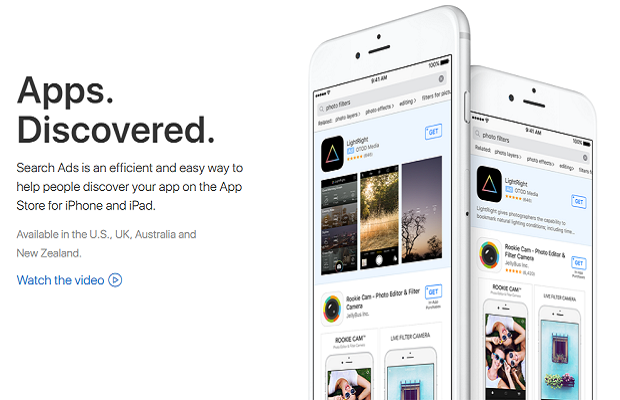Todd Teresi, Apple VP of Advertising Platforms, has outlined some of the company’s advertising and analytics plans during an in-depth keynote Q&A session at the Postback conference in Seattle last week.
During the interview, Teresi discussed how Apple moved away from its iAd format last year in favour of a new Search Ads platform.
Teresi also discussed how Apple plans to continue working with developers to improve metrics in the App Store, and revealed never before seen internal metric.
Search ads in the App store
Speaking with Peter Hamilton, CEO of ad measurement platform TUNE, Teresi said Search Ads now boasts an over 50 percent conversion rate, meaning more than half of the people who interact with iOS App Store ads download the target app. The statistic comes less than one year after Search Ads launched last October.
Apple decided to make better use of its resources with new “Search Ads” designed with app discovery and exposure in mind. The platform incorporates an optimised relevance algorithm that boosts app discovery.
“One of the things that we’ve done is we’ve made a tremendous amount of information and data available in search ads. I think people were surprised by that. This is the first time we’ve provided transparency to keyword information from the store. I think that has really helped. It’s made developers smarter about their business. That leads to better positioning and greater discovery.”
“We take great pride in making sure that if you are searching on a specific type of app that someone from an entirely different genre or category can’t come in, just because they have more money, and sit on that term,” Teresi said. “Relevancy is the core. You don’t even get into the auctions unless you first pass our relevancy bars.”
Closing the gap between engagement and actual installs
Teresi went on to explain that Apple is focusing on is closing the gap between install and engagement numbers. Currently, installs are measured by the first time a person opens the app, and thus the install number rarely correlates with the downloads number. Apple wants to improve this discrepancy and make it easier for marketers to track and retain customers.
Currently, Apple estimates that up to 20% of installs are not included in tracking numbers because of the limited ad tracking enabled by users. Apple’s tracking efforts are further complicated by the fact that users download, delete, reinstall and open a previously downloaded app. The reinstall data is counted as a new install, thus skewing crucial data used by marketers and developers.
Teresi says that Apple is committed to solving these discrepancies in analytics tracking. He said that Apple is working to expose the difference in downloads vs installs and will make the information available to the public, though its efforts will still put privacy first.
“Today, one of the things we offer is we report the conversions which are confirmed downloads. We are very interested in exposing that data out into the third party platform. We want to do that because trust is the important foundation of the marketing industry,” Teresi said.
Following its U.S. debut, Search Ads launched in three English-speaking markets — Australia, New Zealand and the UK, in April this year.
The full video, which dives into deep detail about the marketing and app industry, can be watched below.

